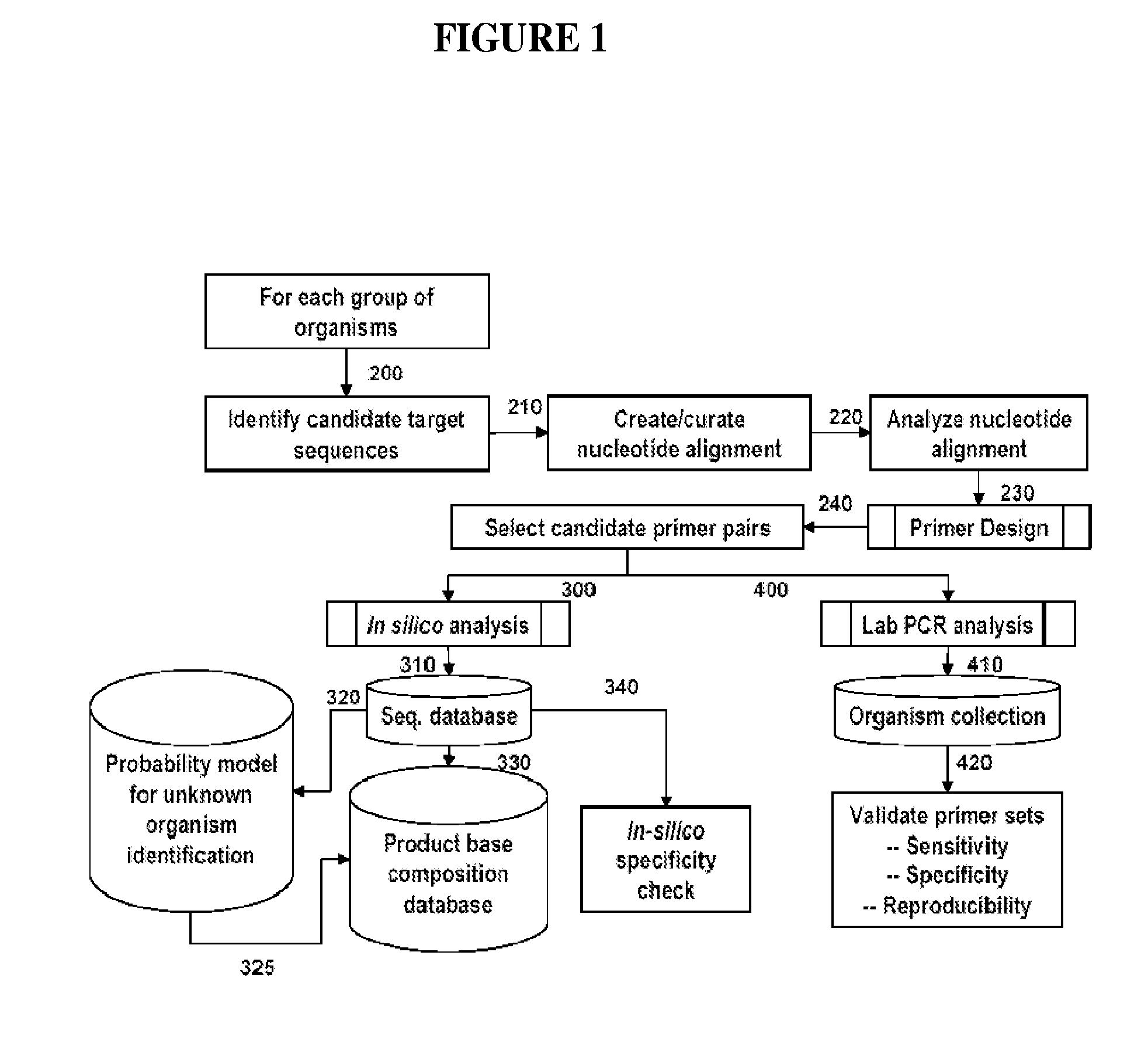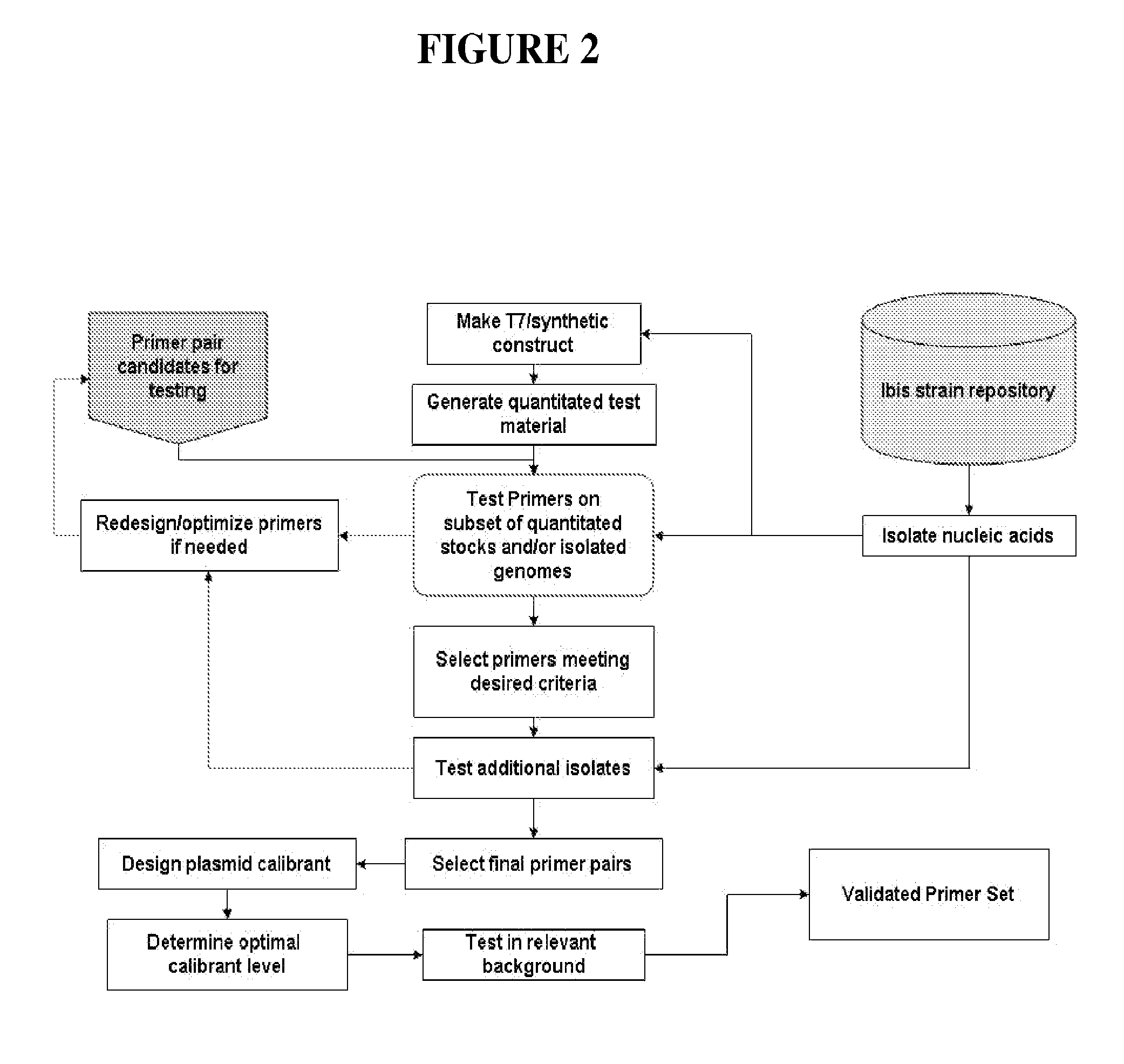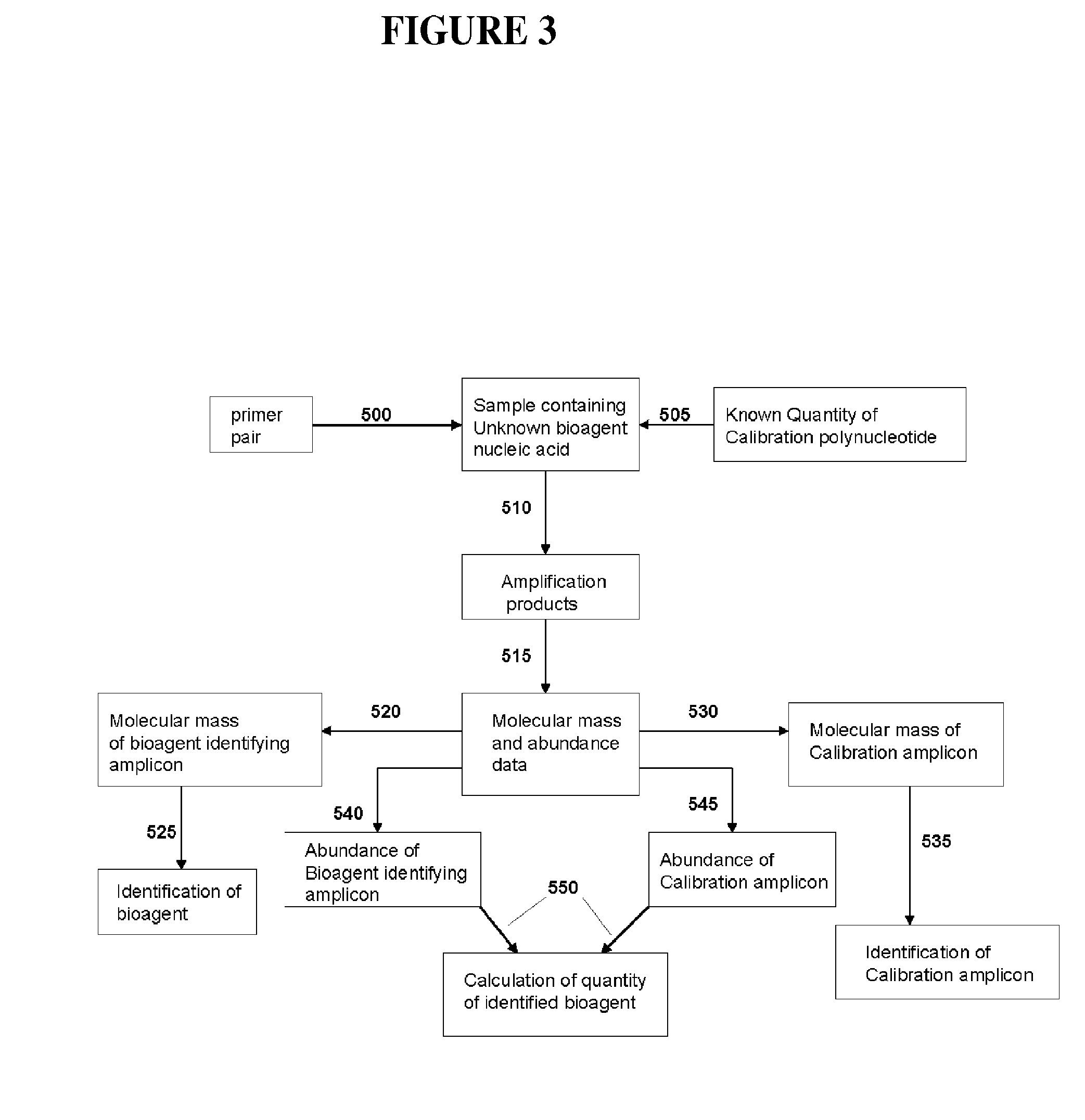Compositions for use in identification of arenaviruses
- Summary
- Abstract
- Description
- Claims
- Application Information
AI Technical Summary
Benefits of technology
Problems solved by technology
Method used
Image
Examples
example 1
Selection of Design and Validation of Primers that Define Bioagent Identifying Amplicons for Arenaviruses
[0133]For design of primers that define arenavirus identifying amplicons, a series of arenavirus genome segment sequences were obtained, aligned and scanned for regions where pairs of PCR primers amplify products of about 29 to about 200 nucleobases in length and distinguish individual strains from each other by their molecular masses or base compositions. A typical process shown in FIG. 1 is employed for this type of analysis. Primer pair validation is carried out according to some or all of the steps shown in FIG. 2.
[0134]A database of expected base compositions for each primer region is generated using an in silico PCR search algorithm, such as (ePCR). An existing RNA structure search algorithm, (Macke et al. Nucl. Acids Res., 2001, 29, 4724-4735, incorporated herein by reference in its entirety) has been modified to include PCR parameters such as hybridization conditions, mis...
example 2
One-Step RT-PCR of RNA Virus Samples
[0138]RNA was isolated from virus-containing samples according to methods well known in the art. To generate DNA from the RNA viruses, a one-step RT-PCR protocol was developed. RT-PCR reactions are assembled in 50 μL, reactions in the 96 well microtiter plate format using a Packard MPII liquid handling robotic platform and MJ Dyad® thermocyclers (MJ research, Waltham, Mass.). The RT-PCR reaction consists of 4 units of Amplitaq Gold®, 1.5× buffer II (Applied Biosystems, Foster City, Calif.), 1.5 mM MgCl2, 0.4 M betaine, 10 mM DTT, 20 mM sorbitol, 50 ng random primers (Invitrogen, Carlsbad, Calif.), 1.2 units Superasin (Ambion, Austin, Tex.), 100 ng polyA DNA, 2 units Superscript III (Invitrogen, Carlsbad, Calif.), 400 ng T4 Gene 32 Protein (Roche Applied Science, Indianapolis, Ind.), 800 μM dNTP mix, and 250 nM of each primer.
[0139]The following PCR conditions are used to produce amplification products for mass spectrometry analysis: 60° C. for 5 m...
example 3
Solution Capture Purification of PCR Products for Mass Spectrometry with Ion Exchange Resin-Magnetic Beads
[0140]For solution capture of nucleic acids with ion exchange resin linked to magnetic beads, 25 μL of a 2.5 mg / mL suspension of BioClone amine-terminated supraparamagnetic beads are added to 25 to 50 μL of a PCR (or RT-PCR) reaction containing approximately 10 μM of a typical PCR amplification product. This suspension is mixed for approximately 5 minutes by vortexing or pipetting, after which the liquid is removed after using a magnetic separator. The beads containing bound PCR amplification product are then washed three times with 50 mM ammonium bicarbonate / 50% MeOH or 100 mM ammonium bicarbonate / 50% MeOH, followed by three more washes with 50% MeOH. The bound PCR amplification products are eluted in a solution containing 25 mM piperidine, 25 mM imidazole, 35% MeOH and peptides as mass calibration standards.
PUM
| Property | Measurement | Unit |
|---|---|---|
| Fraction | aaaaa | aaaaa |
| Time | aaaaa | aaaaa |
| Length | aaaaa | aaaaa |
Abstract
Description
Claims
Application Information
 Login to View More
Login to View More - R&D
- Intellectual Property
- Life Sciences
- Materials
- Tech Scout
- Unparalleled Data Quality
- Higher Quality Content
- 60% Fewer Hallucinations
Browse by: Latest US Patents, China's latest patents, Technical Efficacy Thesaurus, Application Domain, Technology Topic, Popular Technical Reports.
© 2025 PatSnap. All rights reserved.Legal|Privacy policy|Modern Slavery Act Transparency Statement|Sitemap|About US| Contact US: help@patsnap.com



